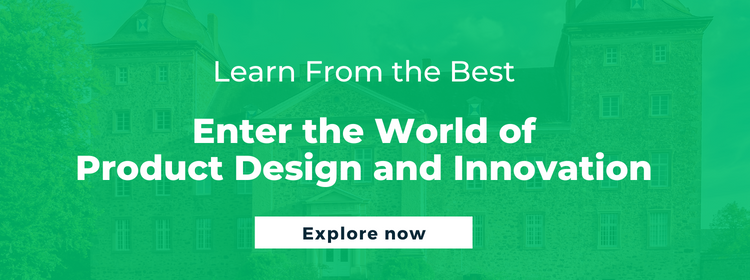A Guide to Building a Minimum Viable Product: 6 Steps for Success

- What is the Concept of a Minimum Viable Product (MVP)?
- How Does the MVP Strategy Help in Efficiently Testing Ideas?
- What are the Key Steps Involved in Implementing an MVP Strategy?
- Can the MVP Strategy be Applied to Any Industry or Product?
- Explore Product Design and Innovation Courses on Emeritus
In the business world, having great ideas for products is quite common. However, turning those ideas into success stories is a different story. While many factors can lead to failure, one key impediment is not gauging how well a product will perform in the market before investing significant resources to build product. This is where the concept of a Minimum Viable Product (MVP) comes in.
In this article, we’ll explore the importance of the MVP strategy to craft and refine your product, as well as its benefits and potential challenges.
What is the Concept of a Minimum Viable Product (MVP)?
Eric Ries, the pioneer behind the Lean Startup methodology, introduced the concept of the Minimum Viable Product (MVP) with a clear purpose. As he puts it, “The minimum viable product is that version of a new product which allows a team to collect the maximum amount of validated learning about customers with the least effort.” This is the essence of how an MVP operates to build product.
MVP holds immense significance in product development. It is particularly valuable in industries like software development that thrive on agility, swift iteration, and insights from customer feedback. Furthermore, an MVP is essentially a strategically stripped-down version of a product.
ALSO READ: Top 5 Product Design Examples and Success Stories to Get Inspired
How Does the MVP Strategy Help in Efficiently Testing Ideas?
The MVP strategy is a powerful approach to build product and enables companies to gather valuable insights with minimal investment. Here’s how the MVP strategy aids in efficiently testing ideas:
1. Focusing on the Business Concept
MVP directs its efforts towards delivering a core set of features rather than an extensive product. Moreover, this approach allows businesses to verify how the product concept resonates with their target audience.
2. Understanding the Market Demand
The concept of MVP primarily revolves around understanding the actual market demand through testing. This means that, rather than solely aiming to sell or acquire customers, it helps in determining what works and what doesn’t.
3. Rapid Iteration
MVPs are designed to be developed and launched rapidly. This speed allows companies to build product and get them in front of real users faster, thus accelerating the feedback loop and product evolution.
4. Collecting Early Customer Feedback
The MVP strategy allows businesses to gather user feedback early in the development process. Consequently, this input is invaluable for enhancing features, user experience, and overall viability.
5. Reducing the Cost of Development
MVP can shield businesses from making significant investments in products that have little to no demand in the market. Additionally, its performance can determine whether or not to build product, thus safeguarding businesses from financial losses.
What are the Key Steps Involved in Implementing an MVP Strategy?
 Implementing an MVP strategy involves a series of key steps. These are:
Implementing an MVP strategy involves a series of key steps. These are:
Step 1: Define the Problem
Understanding the problem is key to creating a solution that resonates with your audience. Clearly articulate the problem your product aims to solve.
Step 2: Conduct Market Research
Identify the specific group of customers who are most likely to benefit from your product. This step also helps in tailoring your MVP to the needs and preferences of your intended audience.
Step 3: Identify MVP Features
Determine the core features that directly address the identified problem and offer value to your target market. Additionally, remember that the aim here is to strive for simplicity by focusing on priorities.
Step 4: Build Product
Create a design and a prototype of the MVP that embody the essential features. This prototype also serves as the blueprint for your MVP, providing a tangible visualization of your product.
Step 5: Launch the MVP
Release the MVP to a select group of early-adopter customers. This controlled launch allows you to gather real-world user feedback and insights while minimizing the initial exposure.
Step 6: Focus on BML
Finally, utilize the Build, Merasure, Learn (BML) cycle to create a dynamic feedback loop. Thus, construct your product while constantly measuring consumer metrics and learning from them. This approach also ensures your product remains relevant as well as stays a step ahead.
Can the MVP Strategy be Applied to Any Industry or Product?
Yes, the MVP strategy is applicable to a broad spectrum of industries and products. While it has gained significant traction in the tech and software development sector, the fundamental principles and steps of this strategy can also be harnessed by any business aiming to build product or service.
For instance, you can apply the MVP strategy to establish a pop-up store to gauge market demand or develop a simplified product version for testing. Similarly, service-oriented enterprises can introduce a limited iteration of their service to a select user group, or even launch an app or website targeting a small user base.
ALSO READ: Learn How Agile Product Management Helps Digital Transformation
What are the Benefits and Potential Challenges of Using the MVP Strategy?
 While the MVP strategy comes with its advantages, it’s also essential to acknowledge potential challenges and prepare to overcome them.
While the MVP strategy comes with its advantages, it’s also essential to acknowledge potential challenges and prepare to overcome them.
Benefits of MVP Strategy
- Crafting an optimal version of the product or service
- Learning from mistakes and making improvements
- Cultivating a dedicated customer base prior to official launch
- Maximizing the value of your investment in product development
Challenges of MVP Strategy
- Obtaining comprehensive customer feedback can be challenging
- Requires consistent commitment to frequent product releases which can be quite demanding
- Striking a balance between simplicity and value delivery can lead to difficulties
- Risk of misinterpreting user feedback, potentially leading to subpar outcomes
ALSO READ: Why is the Product Development Process Important? A Guide
Explore Product Design and Innovation Courses on Emeritus
To conclude, the MVP strategy is a powerful and excellent tool for bringing your ideas to life. It can not only help you build product but also assist you in mitigating risks and achieving success strategically. However, the journey to mastering the art of product development doesn’t conclude here. If you’re seeking to delve deeper into Agile product management, product development process, and product launch strategies, explore the product design and innovation courses offered by Emeritus.
Write to us at content@emeritus.org






